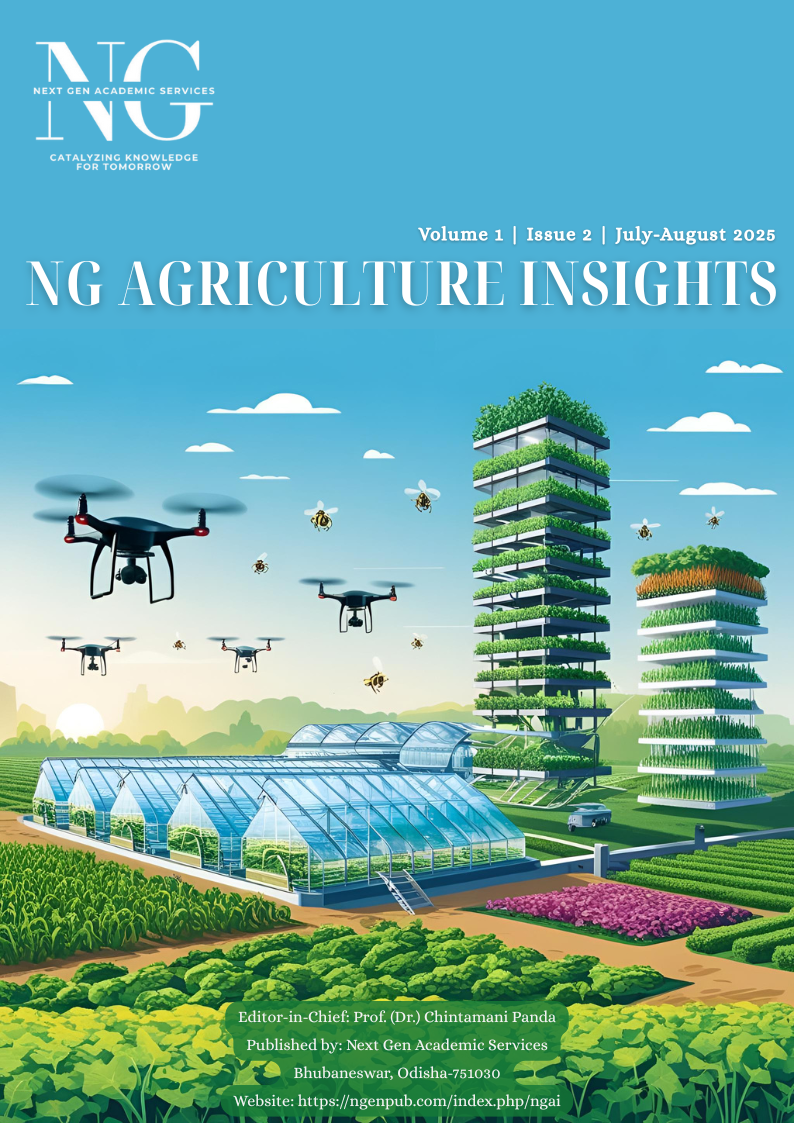Vegetable Leather Innovations, Challenges and Future Prospects
DOI:
https://doi.org/10.5281/zenodo.15818228Keywords:
bio-leathers, environmental sustainability, natural tannins, vegetable leather, water efficiencyAbstract
Vegetable leather, otherwise referred to as vegetable-tanned leather, is an old and more applicable eventuality of commonly constructed leather. This paper reviews the main features, issues along with future possibilities of the usage of vegetable leather. Natural tanning produces environmental advantages and provides distinctive aesthetic qualities of a deep patina and increased durability, using plant derived tannins. The production of vegetable leather has a number of issues such as long turnaround when compared to the animal leather, higher costs and difficulty in maintaining quality. Nevertheless, new inventions in the process of tanning, tannin extraction in plants as well as production efficiency is enhancing the scale and sustainability of vegetable leather. The expanding fashion, footwear, and accessories industries are prompted by the growing need in sustainable products, which is supported by the higher awareness of consumers regarding the environmental safety of their product. Formulating of new bio-leathers via alternative plant products have been showing promise based on the use of pineapple as well as mushrooms and cactus. Vegetable leather has a great potential to grow as sustainability becomes a greater influence in consumer purchasing behaviour providing an alternative to traditional leather and a viable alternative.
References
Basak, S., Shakyawar, D. B., Samanta, K. K., Kumar, N., Bhowmick, M., & Ghosh, S. (2024). A review on natural fibre-based engineered flexible composite: a futuristic development as leather alternative. The Journal of The Textile Institute, 1-18. https://doi.org/10.1080/00405000.2024.2403884
Malabadi, R. B., Kolkar, K. P., Chalannavar, R. K., & Baijnath, H. (2025). Plant Based Leather Production-An update. World Journal of Advanced Engineering Technology and Sciences, 14(01), 031-059. https://doi.org/10.30574/wjaets.2025.14.1.0648
Oliveira, M., Zucaro, A., Passaro, R., & Ulgiati, S. (2024). Life cycle assessment of leather treatment at various scales: comparison between chrome and vegetable processes. The International Journal of Life Cycle Assessment, 29(2), 153-173. https://doi.org/10.1007/s11367-023-02232-3
Rao, J. R., Chandrababu, N. K., Muralidharan, C., Nair, B. U., Rao, P. G., & Ramasami, T. (2003). Recouping the wastewater: a way forward for cleaner leather processing. Journal of cleaner production, 11(5), 591-599. https://doi.org/10.1016/S0959-6526(02)00095-1
Singh, B. P., Singh, A. K., & Tripathi, V. (2024, January). Application of Technology in development of Leather Industry. In 2024 International Conference on Healthcare Innovations, Software and Engineering Technologies (HISET) (pp. 386-389). IEEE. https://doi.org/10.1109/HISET61796.2024.00113
Tasca, A. L., & Puccini, M. (2019). Leather tanning: Life cycle assessment of retanning, fatliquoring and dyeing. Journal of Cleaner Production, 226, 720-729. https://doi.org/10.1016/j.jclepro.2019.03.335
Thomasset, A., & Benayoun, S. (2024). Assessing the durability of diverse leather tanning techniques for the manufacturing of leather goods through artificial aging processes. Cleaner Engineering and Technology, 22, 100807. https://doi.org/10.1016/j.clet.2024.100807
Downloads
Published
Issue
Section
License
Copyright (c) 2025 Padma Wangail, B R Adarsh Shritam, Gayatri Sinha

This work is licensed under a Creative Commons Attribution 4.0 International License.





